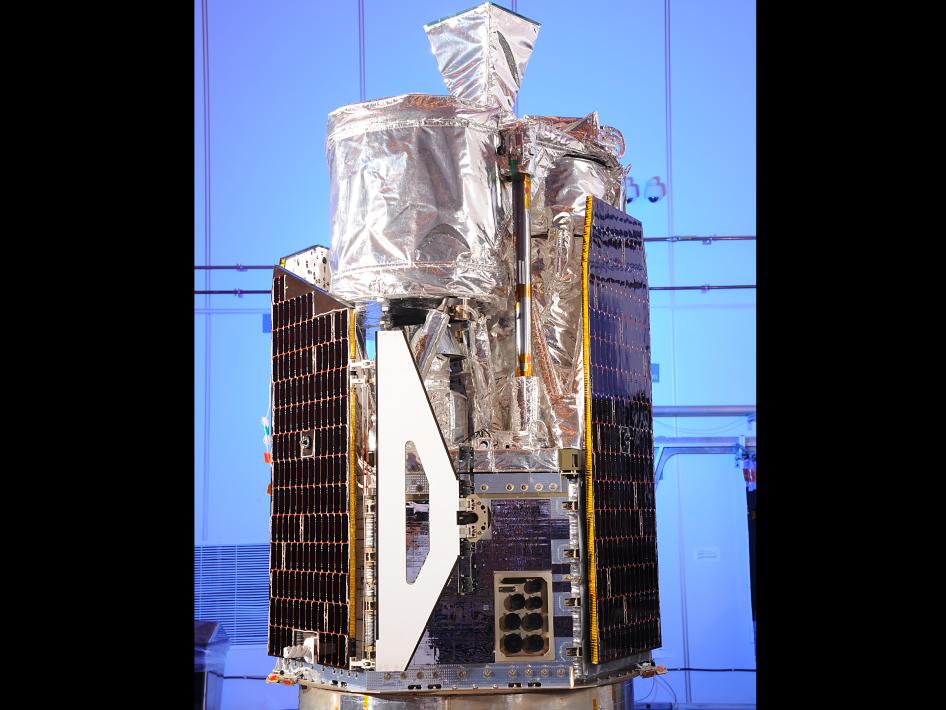
 Credit: NASA/JPL-Caltech/Orbital
Credit: NASA/JPL-Caltech/Orbital
NuSTAR Birth
Some of the Universe's most interesting phenomena (associated with black holes, neutron stars and star death) can best be studied in the X-ray region of the electromagnetic spectrum. Unfortunately, getting a direct, clear view of these phenomena at the highest energies is difficult, since it's hard to focus such high energy radiation. The best X-ray images of the Universe available come from the Chandra X-ray observatory, but these images are restricted to relatively low X-ray energies. Now a new NASA telescope, The Nuclear Spectroscopic Telescope Array or NuSTAR (shown above in its pre-launch configuration), will extend the energy range of X-ray images by nearly a factor of 10. NuSTAR does this thanks to breakthroughs in detector technology and X-ray optics. An interesting feature of NuSTAR's design is its deployable mast, used to extend the observatory to its full 10 meter focal length when on orbit, from its pre-launch size of less than two meters. Because this mast will flex slightly as the spacecraft orbits, NuSTAR employs a laser measurement system to monitor the degree of motion of the mirrors relative to the detectors. NuSTAR is scheduled for launch in the early spring, aboard a Pegasus rocket, like that used for HETE-2. During its two-year prime mission, NuSTAR will survey high-energy X-ray emission from black holes, help determine how chemical elements are cooked up in supernova explosions, and find new, previously unknown high energy sources.
Published: January 30, 2012
<
HEA Dictionary ● Archive
● Search HEAPOW
● Other Languages
● HEAPOW on Facebook
● Download all Images
● Education ● HEAD
>

Each week the HEASARC
brings you new, exciting and beautiful images from X-ray and Gamma ray
astronomy. Check back each week and be sure to check out the HEAPOW archive!
Page Author: Dr. Michael F. Corcoran
Last modified Tuesday, 27-Feb-2024 10:13:29 EST


